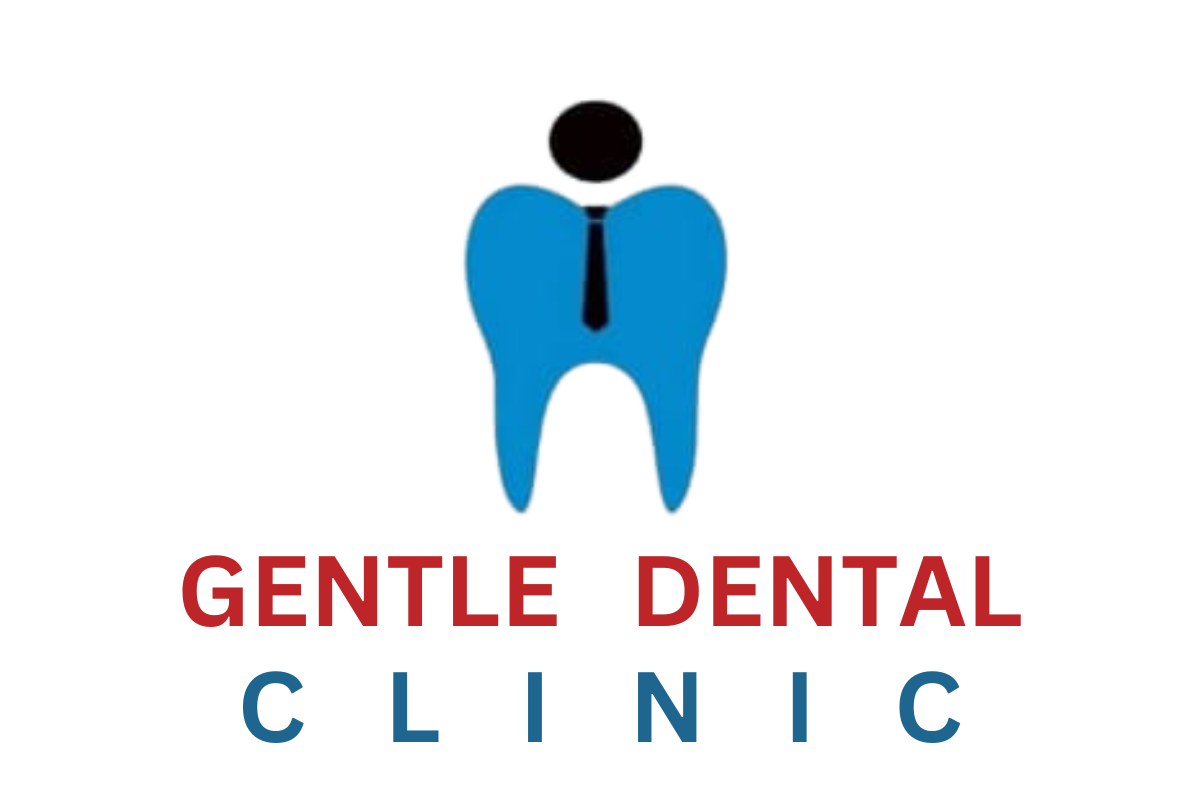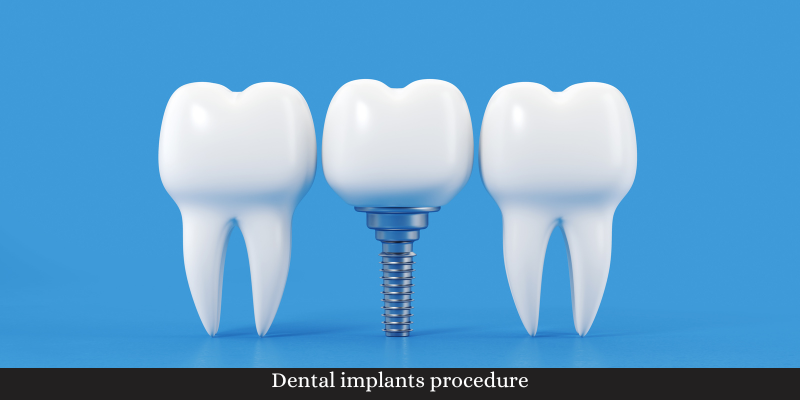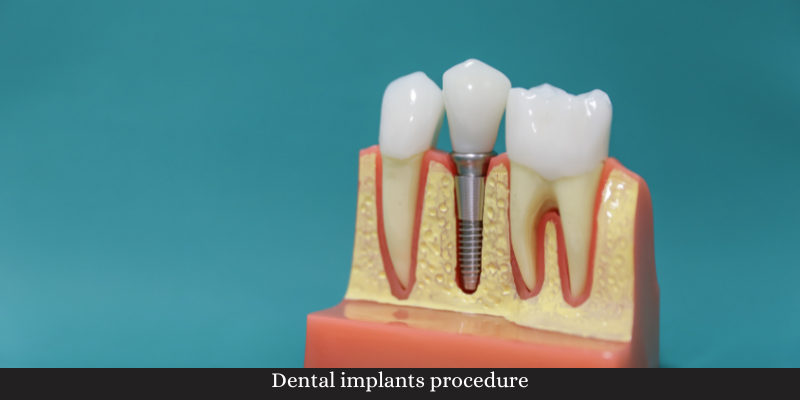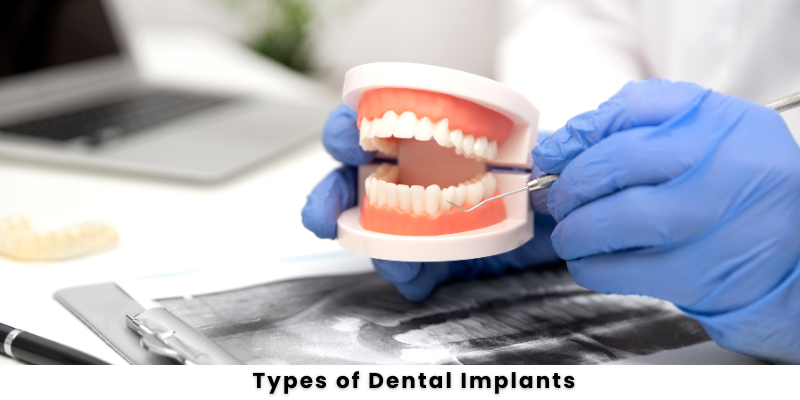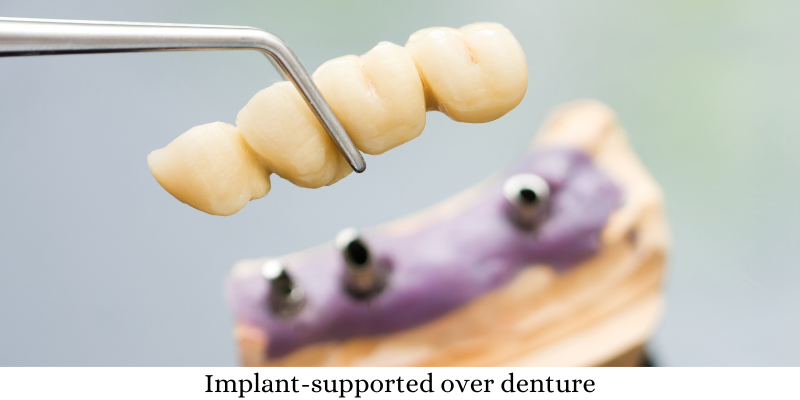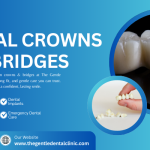Implant-Supported Overdentures
Implant-supported overdentures represent a significant advancement in dental prosthetics, offering an innovative solution for individuals dealing with the challenges of complete tooth loss. Traditional dentures often come with issues such as poor fit, discomfort, and inadequate stability, affecting the wearer’s ability to speak, chew, and engage in social interactions confidently. Implant-supported overdentures address these shortcomings by combining the natural feel and function of a permanent solution with the removability and ease of maintenance of traditional dentures.
The fundamental principle behind implant-supported overdentures is the use of dental implants as a stable foundation. These titanium posts are surgically embedded into the jawbone, providing exceptional support and retention for the overdenture. The implants integrate with the bone through a process called osseointegration, which ensures a secure fit and minimizes movement. This integration not only enhances the stability and retention of the denture but also has the added benefit of preserving the jawbone, preventing the bone loss that commonly occurs with conventional dentures.
Patients who opt for implant-supported overdentures experience numerous advantages, including improved comfort, better chewing efficiency, and enhanced speech articulation. Additionally, they offer greater aesthetics and can significantly boost the wearer’s confidence and quality of life. As a result, implant-supported overdentures are increasingly becoming the preferred choice for patients seeking a reliable and long-term solution for edentulism.
Benefits Of Implant-Supported Overdentures
Implant-supported overdentures offer a modern solution for individuals seeking enhanced stability and functionality compared to traditional dentures. One of the primary benefits is their ability to provide superior retention and support, as they are anchored securely by implants placed in the jawbone. This stability reduces the likelihood of slippage and movement, which is a common issue with conventional dentures. As a result, individuals experience improved confidence while speaking and eating.
The enhanced stability also allows for a more diverse diet, enabling individuals to enjoy a wider variety of foods without fear of dislodgment. Furthermore, implant-supported overdentures help preserve the jawbone, which can deteriorate when teeth are missing. The implants act as artificial tooth roots that stimulate the jawbone, promoting bone retention and preventing the sunken facial appearance commonly associated with tooth loss.
These overdentures also contribute to improved oral health since they are easier to clean and maintain compared to traditional dentures. The customization of these devices ensures a comfortable fit, tailored to the specific contours of the patient’s mouth, enhancing comfort and overall oral health. Additionally, implant-supported overdentures reduce the need for adhesives, simplifying the daily routine of denture wearers. Overall, implant-supported overdentures offer a combination of aesthetic benefits, functional advantages, and oral health improvements, greatly enhancing the quality of life for users.
The Procedure For Implant-Supported Overdentures
The procedure for obtaining implant-supported overdentures begins with a comprehensive evaluation by a dental professional, typically a prosthodontist or oral surgeon. This evaluation includes a review of the patient’s oral health history, a thorough examination of the mouth, and imaging studies such as X-rays or CT scans to assess the bone structure and locate optimal implant sites. Once the patient is deemed a suitable candidate, the surgical phase commences with the placement of dental implants into the jawbone.
These implants are usually titanium posts that serve as artificial tooth roots, providing a stable foundation for the overdenture.
After the implant placement, a healing period is necessary to allow osseointegration, where the bone fuses with the implant surface. This process typically takes several months and ensures the stability and long-term success of the implants. During this time, temporary dentures may be worn. Once osseointegration is confirmed, the next stage involves attaching small connectors, known as abutments, to the implants.
These abutments protrude through the gum line and provide attachment points for the overdenture.
Finally, a customized overdenture is fabricated to fit precisely over the abutments or implant bars. The overdenture snaps securely onto the supporting implants, offering improved function, comfort, and aesthetics compared to traditional dentures. Follow-up appointments ensure proper fit, function, and patient adaptation to the new dental prosthesis.
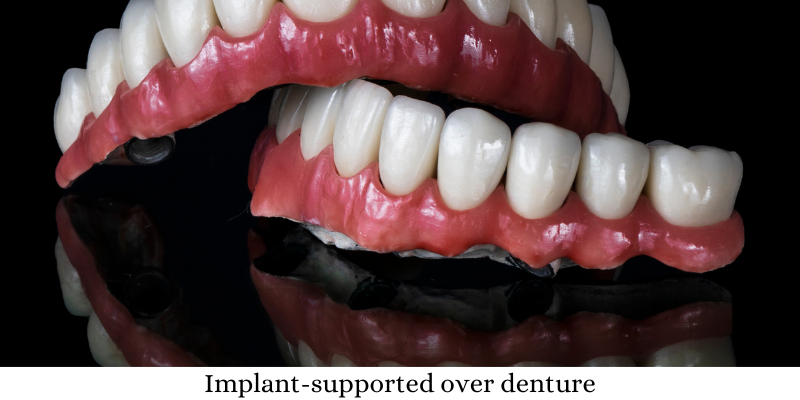
Different Types Of Implant-Supported Overdentures
Implant-supported overdentures are a versatile and effective solution for patients seeking improved stability and function in their dental prosthetics. There are various types of implant-supported overdentures, each designed to accommodate different patient needs and anatomical considerations. One common type is the bar-retained overdenture, which involves securing the denture to a metal bar that follows the curve of the jaw. This bar is anchored by implants, and the overdenture attaches to it with clips or other retaining mechanisms, providing excellent stability and ease of removal for cleaning.
Another option is the ball-retained or stud-attachment overdenture, where each implant is equipped with a ball-shaped attachment. These attachments align with corresponding sockets or clips on the underside of the denture, creating a secure yet easily detachable fit. This design appeals to patients who prefer a simpler, less bulky option. Locator-retained overdentures represent a modern approach, using locator attachments noted for their low profile and dual retention capabilities.
These attachments allow for some rotational movement, which can increase comfort for the wearer.
The choice between these types often depends on individual factors such as the number of implants available, the condition of the supporting bone, personal preference, and financial considerations. Each type of implant-supported overdenture offers distinct advantages, allowing dental professionals to tailor treatment plans that best meet the unique needs of their patients.
Caring For Your Implant-Supported Overdentures
Caring for your implant-supported overdentures is essential to ensure their longevity and maintain oral health. Proper maintenance starts with a daily oral hygiene routine. Just like natural teeth, your overdentures require thorough cleaning to prevent plaque buildup and gum disease. Use a soft-bristled toothbrush and non-abrasive denture cleanser to gently clean your overdentures, paying close attention to the attachment areas where the denture meets the gums.
It’s essential to clean your gums, tongue, and the roof of your mouth with a soft toothbrush or gauze to remove any bacteria or debris.
Make it a habit to remove your overdentures at night. This gives your gums a chance to rest and helps prevent fungal infections. Soak the overdentures overnight in a denture cleaning solution to keep them clean and free of stains. Regular dental check-ups are crucial for assessing the condition of your overdentures and the health of your dental implants. During these visits, your dentist will examine the fit of the overdenture and check for any signs of wear or damage to the implants or attachment system.
A professional cleaning will also be done to ensure that your oral health remains optimal. By taking these steps, you can enjoy the benefits of your implant-supported overdentures while maintaining a healthy, confident smile.
Cost And Considerations For Implant-Supported Overdentures
When considering implant-supported overdentures, cost is a significant factor that can vary tremendously based on numerous elements, including geographical location, the number and type of implants required, the material of the overdenture, and additional procedures that might be necessary. Generally, implant-supported overdentures tend to have a higher initial cost compared to traditional dentures, primarily due to the surgical component and the implants themselves.
Each implant can range from several hundred to a few thousand dollars, depending on the aforementioned factors.
Moreover, consultations with specialists, such as oral surgeons, prosthodontists, or periodontists, can add to the overall expense. However, many patients find that the long-term benefits outweigh these initial costs. Implant-supported overdentures offer superior stability, functionality, and durability, improving the quality of life in terms of ease of eating, speaking, and overall comfort. Dental insurance may cover a portion of the costs, although it’s advisable to check with providers about specific coverage options available for dental implants and prosthetics.
Patients should also take into account the long-term maintenance costs associated with implant-supported overdentures. Regular dental visits for adjustments, cleanings, and inspections of both the dentures and the implants themselves are crucial for ensuring their longevity. Despite the higher upfront costs, many patients report satisfaction with their investment due to the significant improvements in oral health and daily life activities.
Frequently Asked Questions.
What are implant-supported overdentures?
Implant-supported overdentures are dentures that are secured with dental implants for better stability, comfort, and function.
How are they different from traditional dentures?
Unlike traditional dentures, implant-supported overdentures snap onto implants, preventing slipping and improving chewing ability.
Who is a good candidate for implant-supported overdentures?
Ideal candidates have sufficient jawbone density and good oral health. A consultation with a dentist can determine eligibility.
How long do implant-supported overdentures last?
With proper care, the implants can last a lifetime, while the overdenture itself may need replacement every 10–15 years
